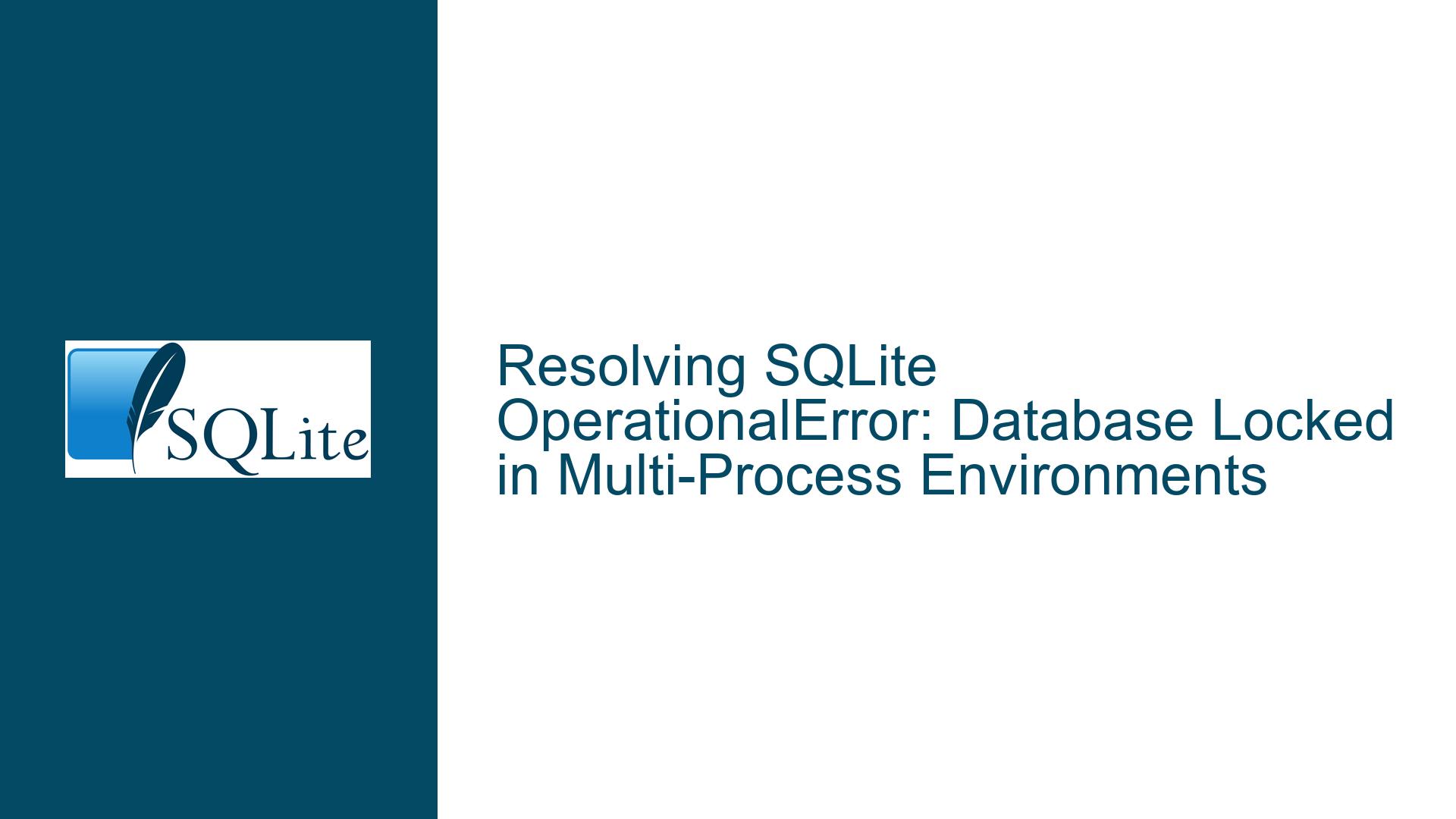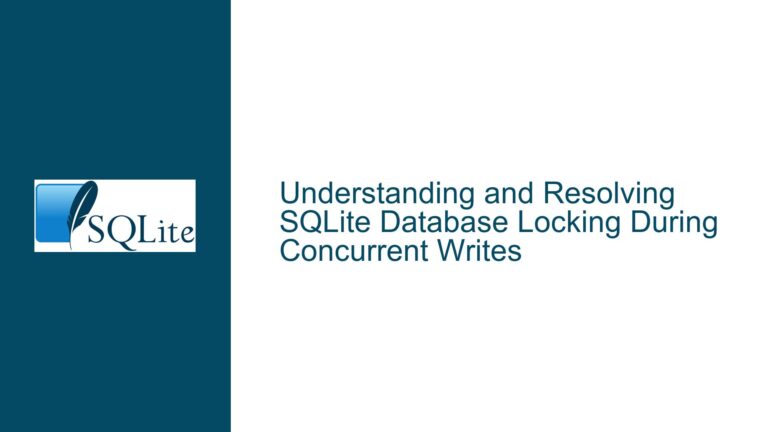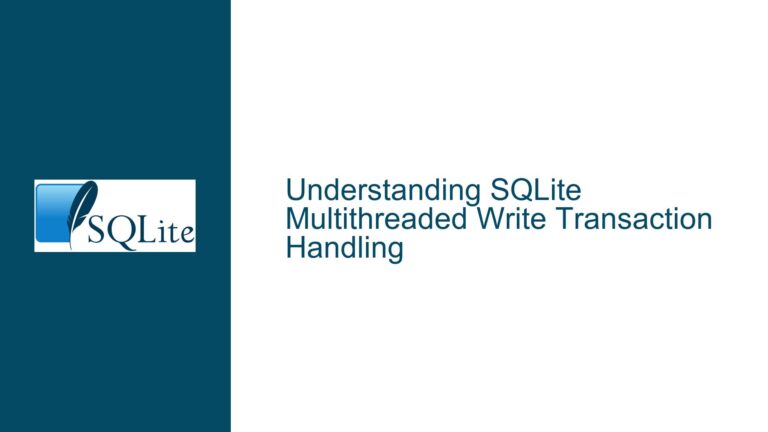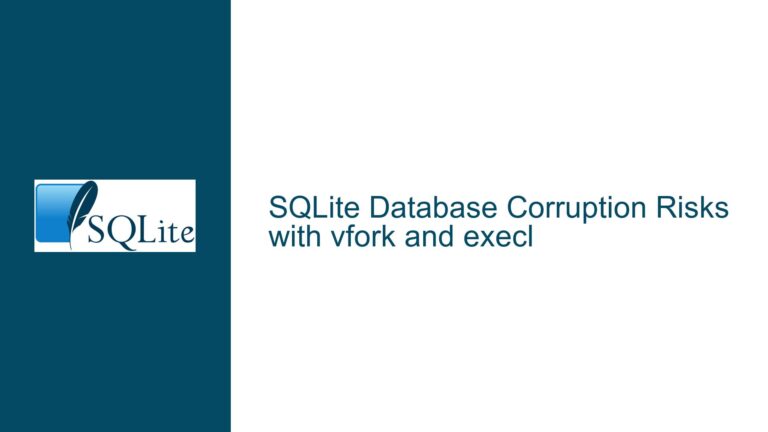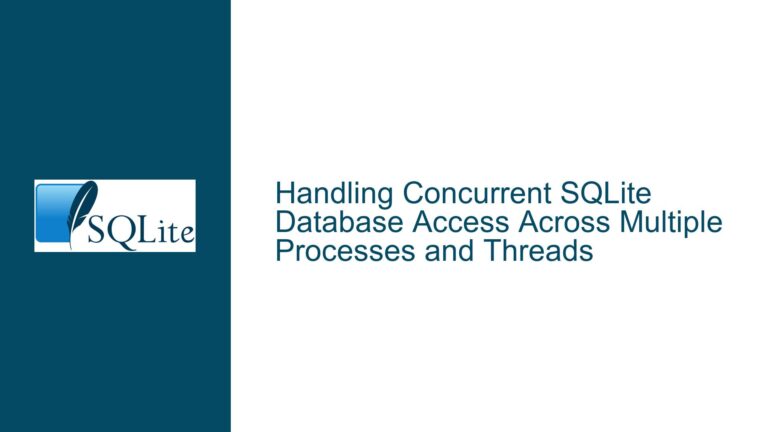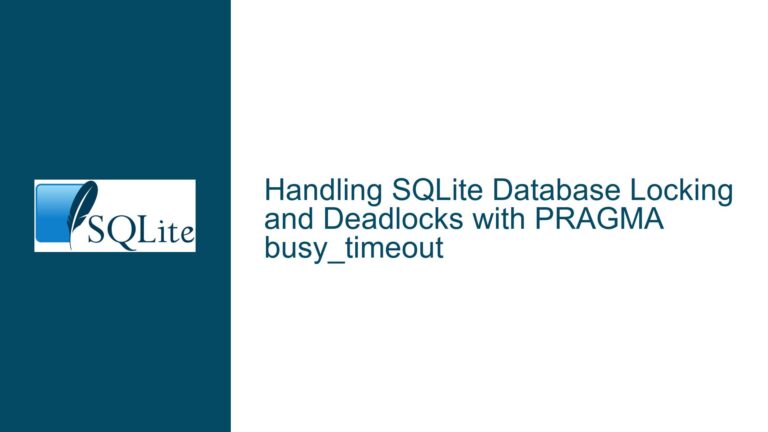Resolving SQLite OperationalError: Database Locked in Multi-Process Environments
Understanding the SQLite Database Locked Error in Concurrent Environments
The SQLite OperationalError: database is locked occurs when multiple processes or threads attempt to access the same database file in a way that violates SQLite’s concurrency control mechanisms. SQLite employs a file-based locking system to manage concurrent access, ensuring data integrity by allowing only one writer (or multiple readers) at a time. When a process initiates a write operation (e.g., INSERT, UPDATE, DELETE), it acquires an exclusive lock on the database file. If another process attempts to read or write during this period, it may encounter the "database is locked" error, especially if the initial process holds the lock indefinitely due to uncommitted transactions, unreset prepared statements, or improper connection management.
SQLite’s locking model operates in tiers: shared locks (for read operations), reserved locks (for pending writes), pending locks (blocking new readers during a pending write), and exclusive locks (active writes). The error arises when a process cannot acquire the required lock within the configured timeout period. While increasing the timeout parameter (via sqlite3_busy_timeout()) can mitigate transient contention, it does not resolve underlying issues like unclosed transactions or unmanaged connections. The problem is exacerbated in multi-process environments where background tasks, cron jobs, or parallel workers access the same database without proper synchronization.
Key factors influencing this behavior include:
- Transaction scope: Long-running or uncommitted transactions retain locks.
- Prepared statement lifecycle: Unfinalized statements keep associated resources active.
- Connection pooling: Misconfigured pools may allow stale connections to hold locks.
- Write-Ahead Logging (WAL) mode: Disabling WAL reduces concurrency capabilities.
Root Causes of Persistent Database Locking in Multi-Process Workflows
1. Uncommitted Transactions or Unreleased Locks
Transactions in SQLite implicitly or explicitly acquire locks. An explicit BEGIN or BEGIN EXCLUSIVE statement initiates a transaction, while COMMIT or ROLLBACK releases locks. If a process fails to finalize transactions (e.g., due to missing COMMIT in code logic), the database remains locked indefinitely. This is common in workflows where exceptions or early returns bypass transaction closure. For example:
# Python example with missing commit/rollback
conn = sqlite3.connect('mydb.db')
cursor = conn.cursor()
try:
cursor.execute("BEGIN")
cursor.execute("INSERT INTO logs (message) VALUES ('test')")
# Missing conn.commit()
except:
pass # Missing conn.rollback()
Here, the transaction remains open, blocking other processes.
2. Unreset or Unfinalized Prepared Statements
Prepared statements (e.g., SELECT queries) hold shared locks until they are explicitly reset or finalized. If a process fetches a subset of rows from a large result set and does not reset the statement, the lock persists. For instance:
// C example with unfinalized statement
sqlite3_stmt *stmt;
sqlite3_prepare_v2(db, "SELECT * FROM large_table", -1, &stmt, NULL);
while (sqlite3_step(stmt) == SQLITE_ROW) {
// Read first 3 rows and break
break;
}
// Missing sqlite3_finalize(stmt);
The unfinalized statement keeps the shared lock active, blocking writers.
3. Improper Connection Handling Across Processes
Each SQLite connection operates independently. In multi-process environments, failing to close connections (via sqlite3_close() or equivalent) leaves locks in place. Background processes that fork without reinitializing connections risk inheriting open handles, leading to lock conflicts. Additionally, using a single connection across multiple threads without synchronization causes undefined behavior.
Comprehensive Solutions for Resolving and Preventing Database Lock Contention
1. Audit and Enforce Transaction Finalization
Review all code paths involving transactions to ensure COMMIT or ROLLBACK is executed:
- Use context managers: Modern SQLite APIs provide transactional context handlers. In Python:
with conn: # Automatically commits or rolls back conn.execute("INSERT INTO logs (message) VALUES ('test')") - Explicit error handling:
try: conn.execute("BEGIN") # ... operations ... conn.commit() except Exception as e: conn.rollback() raise e - Enable auto-commit: Disable manual transactions unless necessary.
2. Manage Prepared Statements Rigorously
Ensure all statements are reset or finalized after use:
- Finalize after execution:
sqlite3_stmt *stmt; sqlite3_prepare_v2(db, "SELECT * FROM large_table", -1, &stmt, NULL); while (sqlite3_step(stmt) == SQLITE_ROW) { /* ... */ } sqlite3_reset(stmt); // Release locks but keep statement sqlite3_finalize(stmt); // Release all resources - Use wrappers: High-level ORMs (e.g., SQLAlchemy) automate statement lifecycle management.
3. Optimize Connection and Concurrency Settings
- Limit connection lifespan: Open connections only when needed and close immediately after.
- Enable WAL mode:
PRAGMA journal_mode=WAL;WAL allows concurrent reads and writes by separating writes into a log file.
- Adjust busy timeout:
conn.execute("PRAGMA busy_timeout = 5000;") // 5-second timeout - Isolate writer processes: Dedicate a single process for write operations and use queues for concurrency.
4. Diagnose Locking in Real-Time
Use SQLite’s sqlite3_status() or external tools to monitor locks:
- Check pending locks:
fuser mydb.db # List processes holding the file - Inspect database status:
SELECT * FROM sqlite_master WHERE type='table';A locked database may return
SQLITE_BUSYhere.
By systematically addressing transaction scope, statement lifecycle, and connection hygiene, developers can eliminate persistent locking issues in multi-process SQLite environments.
